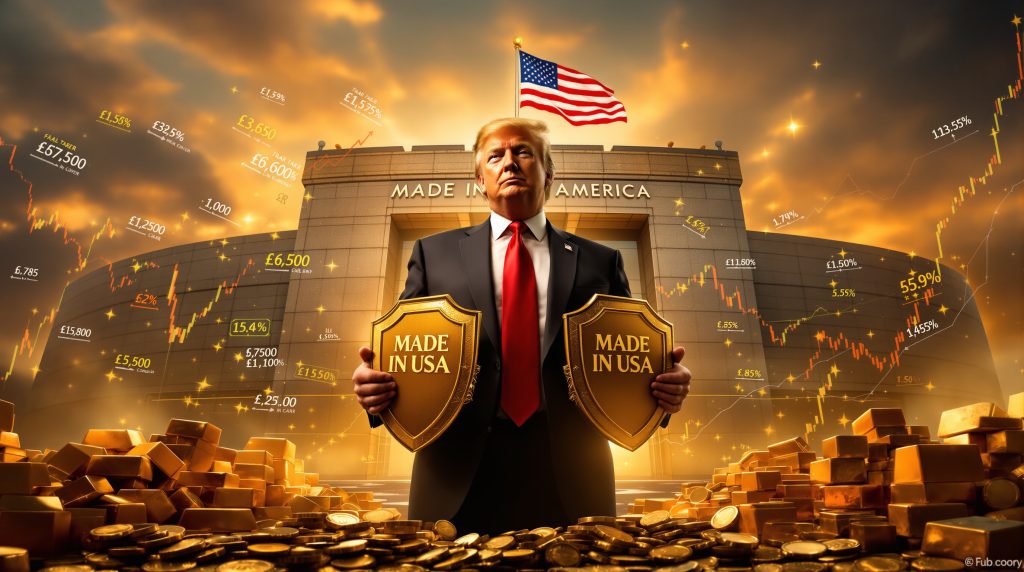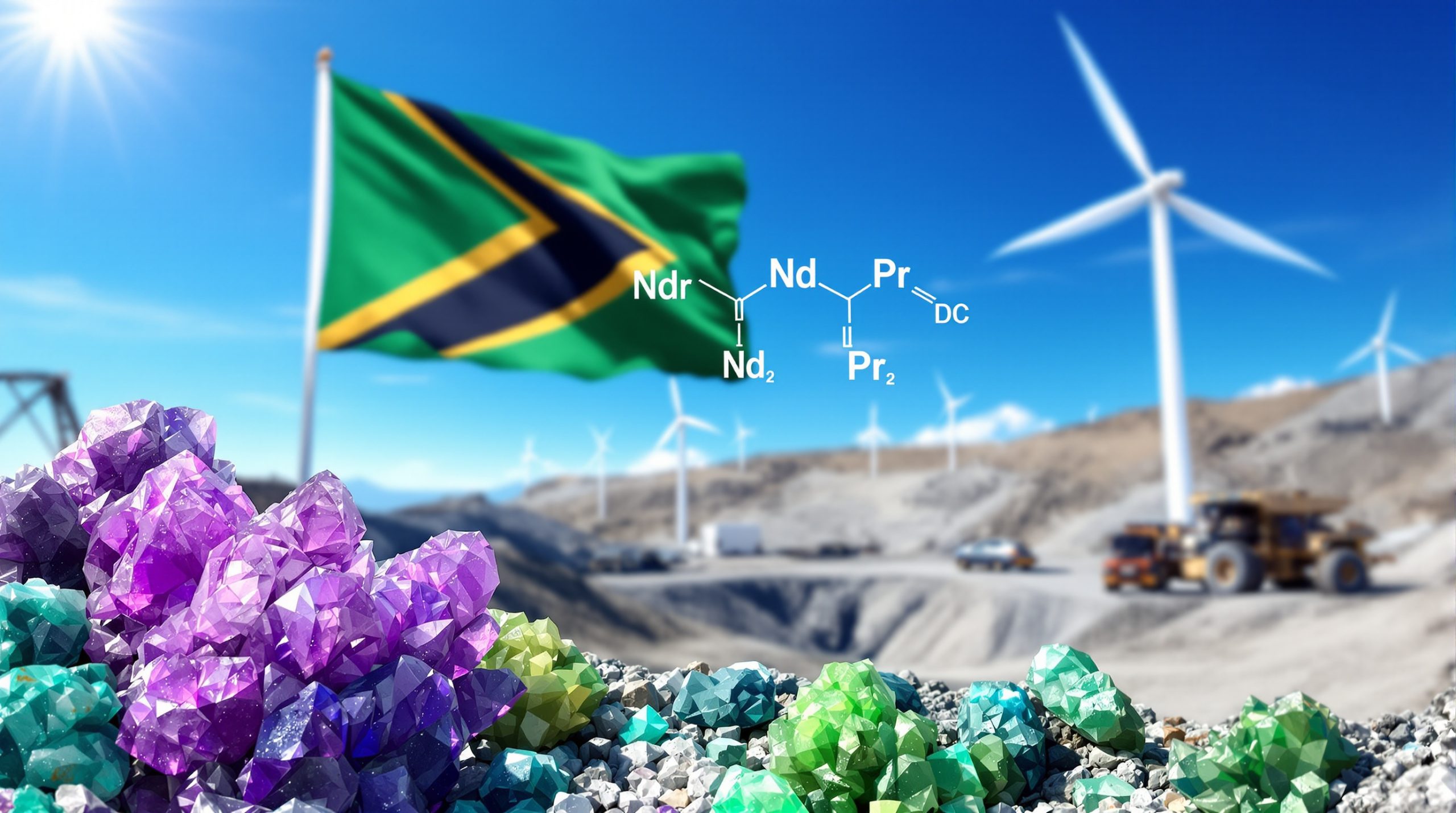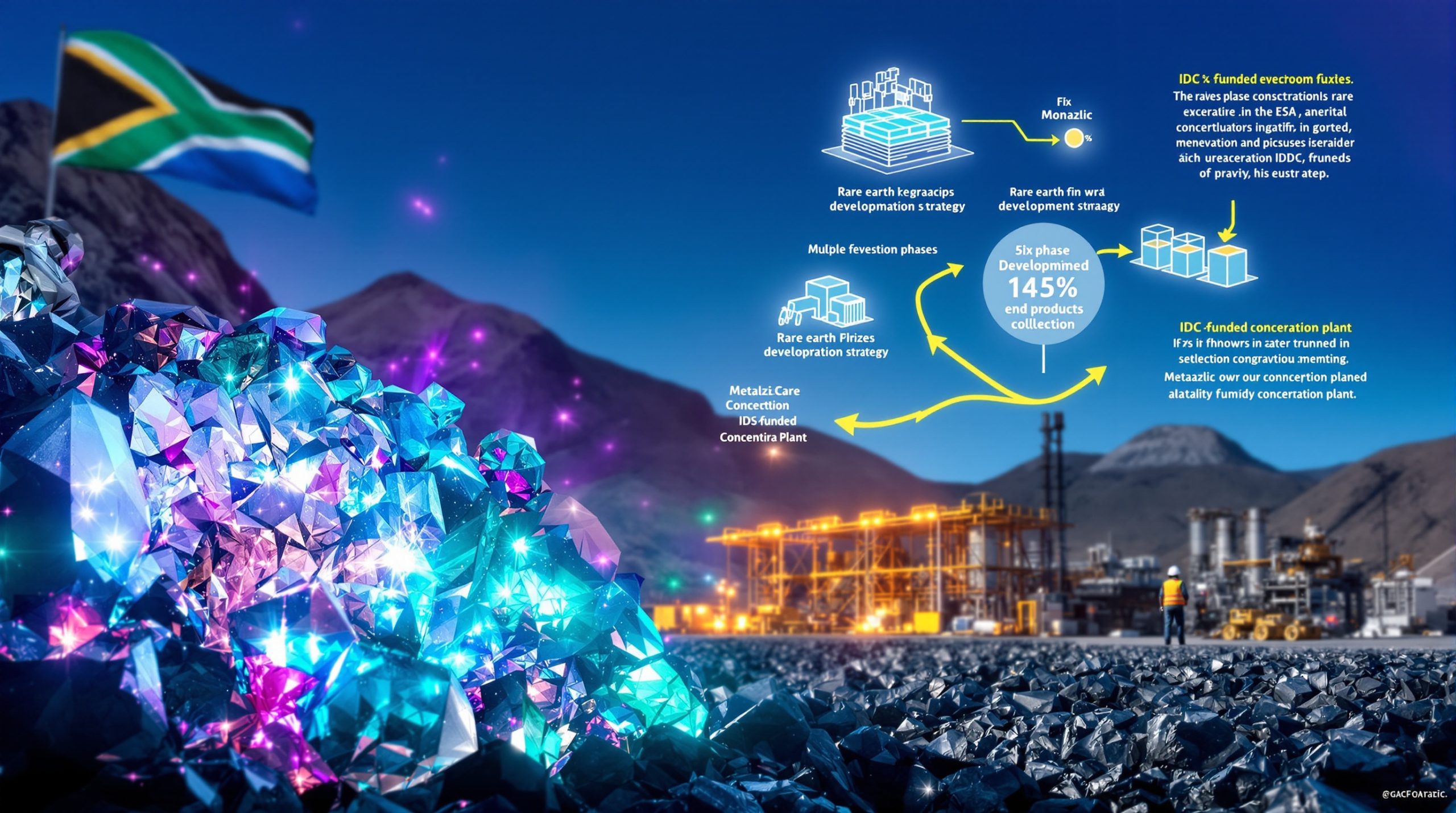What Is the "Trump Shock" and Why Does It Matter?
The term "Trump shock" has emerged to describe significant economic and geopolitical disruptions stemming from policy approaches that prioritize economic nationalism over globalization. Unlike typical political transitions, this shift represents a fundamental change in America's economic positioning—moving toward what some analysts characterize as "Fortress America."
This economic strategy prioritizes domestic manufacturing capabilities, energy independence, and critical mineral security while leveraging tariffs and trade restrictions as primary policy tools. The effects are rippling through global markets, creating both challenges and opportunities for investors, particularly in resource sectors.
The impact of these policies extends beyond immediate market reactions, with structural changes that could reshape global trade patterns and supply chains for years to come. For investors, understanding these shifts is crucial for navigating potential volatility and identifying sectors poised to benefit from the Trump tariffs impact.
How Is "Fortress America" Strategy Transforming Markets?
The economic vision centered on rebuilding American manufacturing capacity focuses particularly on sectors considered essential for national security and geopolitical leverage. This approach prioritizes several key areas:
Reshoring manufacturing capabilities critical to defense and infrastructure
Securing domestic supply chains for critical minerals and resources
Achieving energy independence through expanded domestic production
Implementing protective tariffs to shield American industries from foreign competition
This strategy represents more than just rhetoric—it's a comprehensive restructuring of America's economic relationship with the world. The U.S. manufacturing sector, which declined from 28.1% of GDP in 1953 to just 12.0% in 2023 according to Bureau of Economic Analysis data, has become a focal point for economic policy.
Recent initiatives like the CHIPS and Science Act, which allocated $52.7 billion for semiconductor manufacturing incentives, demonstrate this commitment to rebuilding domestic industrial capacity. This focus on manufacturing reshoring and supply chain security has significant implications for resource markets, particularly for materials deemed critical to national security.
What Makes This Economic Approach Different from Previous Administrations?
While critics describe certain economic policies as "chaotic," a closer examination reveals a consistent underlying strategy focused on strengthening America's geopolitical position through economic means.
| Traditional Approach | New Protectionist Approach |
|---|---|
| Prioritizes global integration | Emphasizes national self-sufficiency |
| Focuses on free trade agreements | Employs strategic tariffs and trade barriers |
| Relies on global supply chains | Builds domestic manufacturing capacity |
| Emphasizes cost efficiency | Prioritizes security and control |
| Diplomatic engagement | Economic leverage |
This shift represents a fundamental break from decades of bipartisan consensus on globalization and free trade. Average tariff rates under previous administrations maintained relatively consistent levels—Obama (1.4%), Bush (1.2%), Clinton (1.6%)—compared to peak rates of 7.4% in 2018-2019 according to the Peterson Institute for International Economics.
These policy differences create significant market disruptions as businesses and investors adjust to new economic realities. The long-term implications of this shift remain uncertain, but the immediate impact on global trade flows and commodity markets is already evident.
Why Are Markets Underestimating the Economic Policy Shock?
Many Wall Street analysts initially viewed tariff announcements as the peak of market disruption from policy changes. However, this assessment appears increasingly premature as implementation continues and economic effects cascade through global markets.
Several factors suggest the market impacts are still developing:
Escalating tariffs: New tariffs, particularly those targeting countries over specific trade practices, have exceeded initial announcements
Implementation delays: Many tariffs are only now taking effect in the real economy after administrative processes
Economic lag effects: Tariffs and trade restrictions typically impact economic data with 6-18 month delays according to Federal Reserve Economic Data
Complacency bias: Markets tend to underestimate structural changes that don't fit existing models or historical patterns
The full economic consequences of these policies are still working their way through supply chains, manufacturing decisions, and investment patterns—suggesting potential market volatility ahead as reality catches up to policy. Market volatility indicators like the VIX averaged 19.4 in 2023, above the historical average of 16.8, suggesting increased uncertainty.
For investors, this gap between policy implementation and market reaction creates both risks and opportunities as sectors adjust to the new economic landscape. According to The Guardian's analysis, the Trump shock could dramatically reshape global economic relationships for years to come.
How Are Economic Policies Affecting Commodity Markets?
The current policy environment is creating significant tailwinds for commodity markets, particularly for critical minerals and energy resources. The focus on domestic manufacturing, energy independence, and military readiness is inherently resource-intensive.
Inflationary Pressures on Commodities
Several factors are creating inflationary pressure on commodity prices:
Domestic manufacturing push: Requires significant resource inputs including industrial metals and energy
Infrastructure spending: Global infrastructure spending projected to reach $9 trillion annually by 2030 according to the Global Infrastructure Hub
Supply chain restructuring: Creates inefficiencies and higher costs throughout production processes
Tariffs and trade restrictions: Increase input costs across industries, raising prices for finished goods
These inflationary pressures extend beyond U.S. borders, as Europe increases defense spending, Russia maintains its war economy, and China continues stimulus efforts to combat deflationary pressures.
Winners in the Resource Sector
The commodities positioned to benefit most from these trends include:
Copper: Essential for electrification, manufacturing, and infrastructure, with copper price prediction models suggesting continued upside
Uranium: Critical for energy independence and security, with production shortfalls continuing amid uranium market volatility
Gold and silver: Traditional inflation hedges with industrial applications
Critical minerals: Required for defense and technology manufacturing
For resource investors, this environment creates significant opportunities, particularly in domestically-sourced materials that align with national security priorities. Manufacturing typically requires 2-4 times more copper per unit of output than service industries according to the International Copper Association, highlighting the resource intensity of industrial reshoring.
What Are the Risks to Mainstream Investment Strategies?
The market leaders that have driven indices to all-time highs may face significant headwinds as the full impact of economic policy changes unfolds. Several factors create vulnerability:
-
Supply chain disruptions: Affecting production capabilities and costs, with disruption costs averaging 6-10% of annual revenue for affected companies according to McKinsey Global Institute
-
Input cost inflation: Squeezing margins for consumer-focused businesses as commodity prices rise
-
Shifting consumer behavior: As inflation impacts purchasing power and discretionary spending
-
Valuation concerns: The S&P 500 P/E ratio was 24.3x in September 2024, above the 20-year average of 18.7x according to S&P Global
While not predicting an imminent market crash, these structural changes suggest caution regarding the most popular investment themes that have dominated market performance in recent years. The combination of high valuations and potential economic headwinds creates a challenging environment for mainstream investment strategies.
Investors may need to adjust their approach to account for these changing economic conditions, potentially reducing exposure to sectors most vulnerable to supply chain disruptions and input cost inflation.
How Is the Global Response Amplifying Inflationary Pressures?
The U.S. is not acting in isolation. Global responses to geopolitical tensions and economic nationalism are creating additional inflationary pressures:
European remilitarization: European defense spending increased 13% in 2023, reaching $588 billion according to the Stockholm International Peace Research Institute
Russia's war economy: Russia's military expenditure was estimated at $109 billion in 2023, a 16% increase from 2022
China's stimulus efforts: China implemented stimulus measures including 1 trillion yuan in additional sovereign bond issuance in 2023 to counter deflationary pressures
NATO spending commitments: NATO members committed to 2% of GDP defense spending target, with 11 countries meeting this in 2023
These combined forces create a globally inflationary environment for physical assets and commodities—what some analysts describe as "bullish for everything real" that governments cannot print or create through policy.
The geopolitical competition between major powers is driving increased resource consumption across multiple fronts, creating sustained demand for energy and industrial commodities regardless of economic cycles.
What Does This Mean for Uranium Markets?
The uranium sector sits at the intersection of several policy priorities: energy independence, critical mineral security, and military readiness. Recent policy developments highlight this focus, with renewed interest in securing domestic uranium supply chains through Trump mining permits.
However, the market implications are more complex than headlines suggest:
Fungibility challenges: Uranium is a globally fungible commodity with international supply chains
Supply chain complexity: The path from mining to reactor involves multiple processing steps across different countries
Geopolitical bifurcation: Potential for separate Western and Eastern uranium markets as supply chains reorganize
The fundamental bullish case for uranium remains intact regardless of specific policy initiatives:
-
Structural supply deficit: Global uranium production was 49,355 tonnes in 2022, below consumption of approximately 65,000 tonnes according to the World Nuclear Association
-
Secondary supply depletion: Historical inventory drawdowns are largely complete after years of supplementing primary production
-
Production challenges: Restarting mines has proven more difficult than anticipated, with delays and higher costs
-
Growing demand: New reactor construction continues globally, with China planning significant expansion
These fundamentals suggest continued price discovery in uranium markets, with the potential for significant price appreciation as supply struggles to meet demand. Kazakhstan, which produces approximately 43% of global uranium supply, has faced production challenges, highlighting the vulnerability of global supply chains.
Why Is Copper the "Top Trade" for Resource Investors?
Copper stands at the center of multiple converging trends:
-
Electrification: Required for power transmission and electrical systems across all sectors
-
Manufacturing reshoring: Essential input for industrial production and infrastructure
-
Infrastructure development: Used extensively in construction and transportation
-
Technology advancement: Critical component in data centers and advanced computing, with data centers using approximately 1-5 tonnes of copper per MW of capacity
The bullish case for copper extends far beyond specific applications like electric vehicles or AI data centers—it represents a fundamental input for economic development and modernization globally. Global copper demand is projected to grow 2.6% annually through 2030 according to the International Energy Agency.
Supply constraints amplify this outlook:
Project delays: Copper mine development typically requires 10-15 years from discovery to production
Grade decline: Existing mines produce lower-grade ore requiring more processing and energy
Labor disruptions: Strikes and social issues frequently impact production in major copper-producing regions
Jurisdictional challenges: Many copper resources are in politically complex regions with increasing investment risks
These factors create a compelling investment case for copper exposure, particularly during potential market pullbacks that might create attractive entry points. The structural supply-demand imbalance suggests sustained higher prices over the medium to long term.
What's Driving Gold's Record Performance?
Gold has broken through not just nominal all-time highs but real (inflation-adjusted) all-time highs—creating a technical situation with limited historical precedent. With no established resistance levels above current prices, the market is in price discovery mode according to recent gold prices analysis.
Several factors support continued strength:
-
Inflationary policies: Government spending and monetary expansion creating currency debasement concerns
-
Geopolitical tensions: Driving safe-haven demand amid increasing global instability
-
Central bank buying: Central bank gold purchases totaled 1,037 tonnes in 2023, the fourth-highest annual total since 1950 according to the World Gold Council
-
Technical momentum: Breaking through psychological barriers and attracting new investment flows
China's central bank added 225 tonnes to reserves in 2023 alone, reflecting the increasing appeal of gold as a strategic reserve asset. This institutional buying provides fundamental support beyond speculative investment demand.
The absence of historical resistance levels creates the potential for significant upside if momentum continues. However, investors should remember that vertical price movements in either direction rarely sustain themselves indefinitely, suggesting prudent profit-taking strategies are essential.
How Does Silver Fit into the Current Market Environment?
Silver presents a unique investment case as both a precious and industrial metal:
-
Precious metal attributes: Inflation hedge and monetary history aligning with gold's appeal
-
Industrial applications: Essential for electronics, solar panels, and manufacturing, with industrial demand representing approximately 50% of total demand
This dual nature creates potential for outperformance in environments that favor both monetary metals and industrial commodities—precisely the current economic landscape. Solar panel installations alone consumed 140 million ounces of silver in 2023 according to the Silver Institute.
With silver prices approaching historical resistance levels, a breakthrough could open the path to psychologically significant price targets. The silver-to-gold ratio currently near 84:1 remains above the historical average of 65:1, suggesting potential for silver to outperform gold if industrial demand strengthens.
Unlike previous cycles, industrial demand provides a more substantial foundation for sustained higher prices, particularly as renewable energy and electronics manufacturing continue to expand globally.
What Should Investors Consider When Evaluating Mining Jurisdictions?
Political risk remains a critical consideration for resource investors. Recent developments highlight several important principles:
-
Political instability creates unpredictability: Countries with recent coups or political upheaval present heightened risk regardless of current mining policies
-
Historical actions matter: Past nationalizations or expropriations indicate future risk even after changes in government
-
Social license is critical: Local community support can make or break projects regardless of central government policies
-
Regional variations in pragmatism: Eastern European countries often demonstrate more practical approaches to resource development compared to other jurisdictions
Mining-related investment disputes increased 47% from 2020-2023 according to the Fraser Institute Annual Survey of Mining Companies, highlighting the growing importance of jurisdictional considerations in resource investment.
Investors should carefully evaluate jurisdictional risk when considering mining investments, particularly for longer-term development projects where political conditions may change before production begins. The highest-quality geological asset can be rendered worthless by adverse political developments or community opposition.
How Should Investors Position Their Portfolios in This Environment?
The current market environment suggests several strategic considerations:
-
Build cash reserves: Maintain liquidity to capitalize on potential buying opportunities during market volatility
-
Focus on quality: In high-price environments, only high-quality producers generate strong cash flow and sustainable returns
-
Implement systematic profit-taking: Use technical triggers to lock in gains during volatile markets rather than trying to time exact tops
-
Maintain long-term perspective: Short-term volatility shouldn't override fundamental trends in resource markets
For resource investors specifically, copper represents a high-conviction opportunity with both near-term catalysts and long-term structural support. Gold and silver offer inflation protection with momentum, while uranium provides exposure to energy security themes with supply constraints.
The combination of economic nationalism, infrastructure spending, and geopolitical competition creates a supportive environment for physical assets and commodities. However, investors should remain vigilant about valuation and maintain discipline in position sizing and profit-taking to manage the inherent volatility in resource markets.
Navigating the Economic Transformation
The Trump shock represents more than just incremental changes—it's a fundamental restructuring of global economic relationships. This transformation creates both challenges and opportunities for investors, particularly in resource sectors that align with national security priorities.
While market volatility is likely to increase as these policies work through the real economy, the underlying trends support continued strength in physical assets and commodities. Investors who understand these dynamics can position themselves to benefit from one of the most significant economic transformations in decades.
For resource investors specifically, focusing on quality assets in secure jurisdictions offers the best combination of upside potential and downside protection in this evolving landscape. The coming years may see significant price volatility, but the structural drivers for key commodities remain firmly in place.
Want to Stay Ahead of Major Mineral Discoveries?
Gain a market-leading edge with Discovery Alert's proprietary Discovery IQ model, which provides instant notifications on significant ASX mineral discoveries and transforms complex data into actionable investment insights. Visit the Discovery Alert discoveries page to understand how major mineral discoveries like those mentioned in this article can generate substantial returns for investors.




